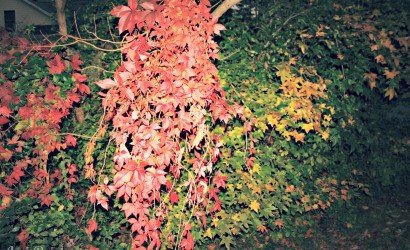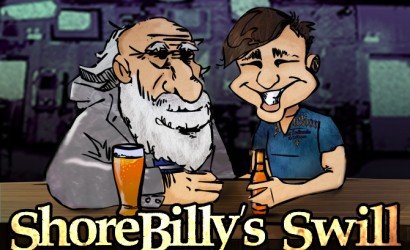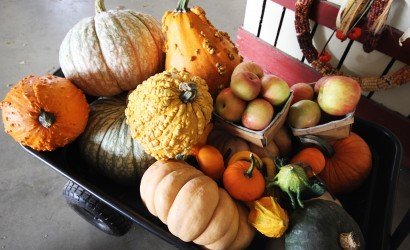At the July meeting of the Lower Eastern Shore Beekeepers Association, Dean Burroughs stood before the club and said,
“Now is the time to extract your honey! If you haven’t extracted honey from you hives yet, get ready to. If you don’t know how to, don’t worry; you’ll be leaving this meeting sticky tonight.”
The words that Burroughs, the Lower Easter Shore Beekeepers Association (LESBA) President, spoke were true. Everyone left the meeting with fingers covered in fresh, sticky honey.
The University of Maryland Extension Office on Nanticoke Road in Salisbury was filled with roughly 30 beekeepers. The Beekeepers Association is made up of a multitude of characters; farmers, gardeners, hobbyists, educators, and nature buffs of all shapes, sizes, ages, and experience levels. One a month the keepers meet to learn about and discuss different bee-related subjects.
The topic of discussion during the last meeting was honey extraction.
Beekeepers traditionally harvest honey at the conclusion of a substantial nectar flow. On the Eastern Shore of Maryland, this usually happens twice a year: mid-summer and mid-fall. Local beekeepers have been monitoring their hives, looking for cured, capped honey.
It’s easiest to harvest honey during a hot sunny day. The honey comb will be warm and fluid rather than viscous. Ron Wilson, a beekeeper with 18 individual hives from Parsonsburg, MD, brought in several bars of comb filled with honey to show the group an extraction. Wilson is Vice-President of the club. His bars of capped honey were warmed from the sun and exemplary tools.
 |
Ron Wilson, LESBA Vice President, uses an uncapping knife to strip the top layer of wax off of a bar of honey comb. |
Burroughs used an uncapping knife, a large steel knife plugged into the wall that rises to a set temperature to make cutting through bees wax easy, to cut the top sliver off of several bars of honey comb. He arranged the bars in a large silver tub balanced on 3 legs with a large hand-crank emerging from the side.
“This extractor works kind of like a bicycle tire. It has spokes that rotate around the center. You just place a bar of honey comb, straight from the hive, in the machine and then crank it so it spins. It just throws honey off of both sides and it gathers in the basin below,” said Wilson while demonstrating the process and spinning the crank by hand.
 |
The interior of a honey extractor. The hand-cranked machine spins the bars of honey comb forcing the honey to run out of the comb and gather at the bottom of the barrel. The honey is then drained through a spout. |
He had 4 bars of honey in the extractor and a 5 gallon bucket with a strainer placed below the machine. Honey was pouring out of the extractor’s spout.
Although some beekeepers prefer not to use extractors – they’d simply rather prefer eating and using waxy honey combs – they are very efficient. For those who have multiple hives, like both Burroughs and Wilson, extractors make sense. After centrifugal force and gravity is used to extract the honey from the combs, it passes through filters, is drained into a pail, and left to sit. Within 48 hours, the wax and comb debris will rise to the top of the sticky substance and clean, clear honey can be drained from the bottom of the bucket via a spout.
 |
Raw honey pours out of an extractor machine. The honey is strained before entering a 5-gallon bucket. The spouted bucked will be used to filled individual honey jars. |
LESBA members plan to extract their own honey this month. The club is preparing to enter the Maryland State Beekeeper’s Association’s Annual Honey and Honey Cookery Show this fall. LESBA has a goal to win one important award at this year’s Honey Show: Best Honey as a Club.
On November 10th, 2012, Jerry Fischer, a Maryland Honey Show judge from the Department of Agriculture’s Office of Apiary Inspection, will present an award to a Maryland bee association whose members earn the highest number of points based on the number of quality products entered in the show. All entries must be a product of the exhibitor’s bees and have been produced within a 12-month period prior to entry. All honey exhibited must have been gathered and ripened in a natural way by honey bees.
If all 30 LESBA members enter at least one jar, container, frame, or block of honey, the club is almost guaranteed to win.
“Some people think that just because we’re from the Eastern Shore that we’re behind when it comes to beekeeping. We don’t think so. We’ve got great honey. I want to go to that show in Annapolis and sweep the contest,” said Burroughs.
“Then they’ll really be talking about all of those beekeepers on the Shore,” he added with a laugh.
Several LESBA members have extracted some honey this season. Others are waiting to see how the fall season treats them. This summer’s droughts, scattered rainstorms, and high temperatures have made the season difficult for some beekeepers; others are having a bountiful season.
The honey not extracted from bee hives will remain capped in the hive for the bees to use themselves. Bees eat honey though the winter because pollen-filled flowers are not available. Some beekeepers feed their bees a homemade sugar-syrup all winter long so they can extract more honey in the summer and fall and know that their bees will be fine during the colder months.
The Maryland State Beekeeper’s Association Honey Show takes place in Annapolis, MD on November 10th. Expect to hear about the Lower Eastern Shore Beekeepers Associations coming home with some prize ribbons.
For more information about LESBA, visit their website.
Photos by Ami Reist.









